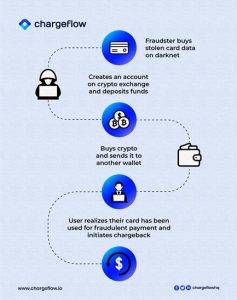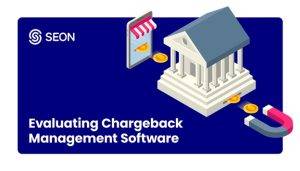Chargeback is a huge problem for cryptocurrency exchanges and trading platforms.
All platforms dealing with cryptocurrencies have had to face chargeback issues.
With the growing number of crypto users and merchants accepting payments in crypto, the chargeback problem has only increased.
It might come across as shocking, but cryptocurrencies have a higher rate of chargeback than eCommerce platforms.
In a conventional crypto purchase, chargebacks are not applicable. However, the problem is with modern crypto platforms that offer cryptos against credit card or wallet payments.
It is one of the major issues that crypto exchanges and firms have to deal with as crypto adoption increases.
Cryptocurrency transactions: How to deal with chargeback issues
Before we get into dealing with chargeback issues, there are some important concepts we need to understand. We will be going through how chargeback works, why it is in place, and how crypto firms can deal with it. Without wasting more time, let’s dive right in.
What is a chargeback?

To oversimplify the definition of a chargeback, we can call it a refund. As the term suggests, you get your charge back from the merchant.
Chargebacks are a core component of electronic money transfers. Without chargebacks, electronic payment gateways would never have been mainstream.
Before the rise of mobile wallets, chargebacks were applicable only to payment cars, that is, credit and debit cards. However, now mobile wallets also fall under chargeback laws. In the United States, chargeback rules are set by the Electronic Fund Transfer Act. Different countries have different laws, but chargeback is a shared practice across electronic payment mediums.
There can be various reasons for a chargeback. Often the reasons are genuine and pertain to mistakes or system errors. However, not all chargebacks are genuine.
In fact, chargeback fraud is a separate subject with thousands of articles about it on the internet. It is one of the most common types of fraud and is very hard to deal with.
In 2021, chargeback frauds cost eCommerce platforms $20 Billion, which is $3.5 billion more than what it was in 2020.
How chargeback frauds happen
Chargeback frauds are a result of loopholes within the chargeback system.
For example, you can place an order on a shopping platform and never get the product. In that case, you raise a ticket for chargeback and get the same.
However, you can also do it when you have got the product. You can claim that your credit card details were compromised and the order was not actually made by you. It works better in subscription services where there is no evidence of physical delivery of an item.
Banks are generally receptive to chargeback claims to protect their customer’s interests. In many cases, banks would initiate the chargeback without verifying the same at the merchant’s end.
Most credit cards have a chargeback period. If you file for chargeback within that duration, you are likely to get it.
In simpler cases, customers get chargebacks for simply returning an item or canceling a subscription.
For such cases, the chances of fraud are much lower. Chargebacks are most common in subscription services, where users can often cite reasons of manipulation and auto-debit.
Chargeback in cryptocurrency transactions
If we look at cryptocurrencies from their core working principles, chargebacks are not possible. However, that is not the case anymore. The worst sufferers of this phenomenon are the cryptocurrency exchanges.
Most exchanges do not have the necessary infrastructure to deal with chargeback frauds. It is one of the most significant challenges for crypto exchanges that demands an urgent solution.
Since all crypto transactions are encrypted, they do not pose the same risk as credit cards. However, that is applicable only in peer-to-peer transactions where you are directly sending coins to someone’s wallets. With crypto exchanges coming at the forefront, the scenario has completely changed.
a) Why crypto exchanges struggle with chargebacks
First up, we need to understand how crypto exchanges work. Exchanges take fiat money from the users in exchange for cryptocurrencies, and they often store the currencies in the exchange itself. Many platforms offer users the choice to download cryptocurrencies to a hot or cold wallet.
Buying cryptocurrencies has never been easier. Crypto exchanges make it very easy to buy cryptos with credit or debit cards. People can also buy cryptocurrencies through wallets like PayPal. If you want to buy BNB, you no longer have to look for someone willing to sell. Crypto exchanges aggregate millions of users and they can transact within themselves with the exchange acting as an intermediary.
Cryptocurrency exchanges fall into the trap of chargeback not because they are doing something wrong, but because buying crypto has become so easy. Anyone with a smartphone can now buy any amount of cryptocurrency provided they have the money in their bank account. Fraudsters have found a unique opportunity here, and continue to make the most of it.
b) How crypto chargebacks are different
To understand how crypto chargebacks are different, we need to take into account its volatility.
If you have $5 today, it will be worth $5 tomorrow as well. Inflation does not have a significant impact in a short duration. That is not the case with crypto.
1 BTC could fall or rise in value significantly within mere hours. Even a 5% change in price makes up for a huge amount if the amount of BTC is significant.
With crypto chargebacks, exchanges also have to deal with this price fluctuation. If a user buys a crypto and it falls in value immediately, they can ask for a chargeback.
Exchanges that are not adept at handling such cases would end up losing more money. Most chargeback fraudsters would cite reasons for third-party unauthorized purchases to get chargebacks.
As exchanges continue to deal with these issues, they end up losing significant amounts of money over time. Another problem here is that most crypto exchanges do not have a big financial institution as their payment partner. Big banks are often more adept at solving fraudulent chargeback issues, but do not partner with exchanges owing to regulatory issues.
Another point of difference occurs when transactions fail at the merchant’s end. Many vendors now accept payments in Bitcoin and other cryptocurrencies. However, many of these are also not legitimate and are often spoofing websites. When a user makes a transaction to such a merchant, they end up losing their cryptocurrencies. Since there is no legal framework to hold the merchant accountable in such cases, they go back to the exchange to claim a chargeback.
How can exchanges deal with chargeback issues

At present, there is only one way for crypto exchanges to deal with chargeback issues.
Chargeback management software, also known as chargeback mitigation service, protects exchanges from chargeback fraud. If you’re considering using chargeback management software, tools like SEON can help you protect your business from chargeback fraudsters while remaining affordable and easy to use.
Chargeback management software is designed to deal with such issues and offer a high success rate for users. Exchanges end up saving a significant amount of money by simply using these services.
Conclusion
Crypto chargeback remains one of the most significant problems for exchanges. At present, nothing works better than chargeback management software to deal with this issue.
In the future, we can hope to see regulatory changes addressing these loopholes and protecting the interests of crypto businesses.
Sources:
Cryptocurrency Transactions and How to Deal with Common Crypto Chargeback Issues (sflcn.com)
Crypto exchanges: Solving chargeback issues | Paysafe
Chargeback Definition (investopedia.com)
Before you adopt the subscription business model, learn how to address chargebacks (chargeflow.io)
Does Cryptocurrency Solve Chargeback Issues? – TechBullion


















